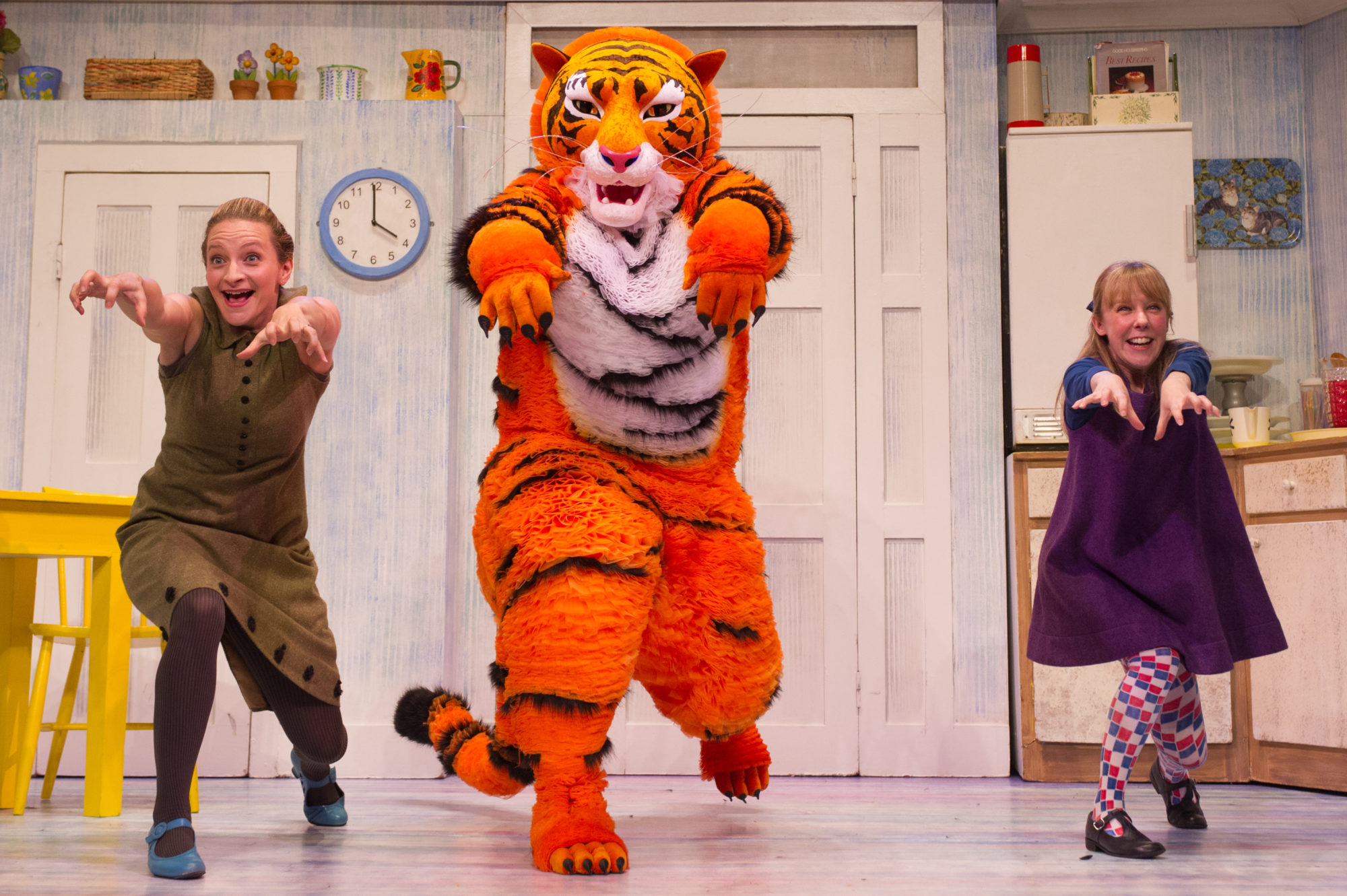Judith Kerr’s 1968 classic picture book The Tiger Who Came To Tea has been the source of much entertainment for generations of children. It’s provoked an equal measure of debate among generations of grown-ups reading it too.
The most widely accepted reading of it is that the Tiger, who visits Sophie and her mummy for tea one afternoon and ransacks their house, represents the threat of the knock at the door experienced by Jews in Europe during the Second World War. It reflects Kerr’s own childhood in 1930s Germany. But how does that explain the Tiger’s impeccable manners and Sophie’s fondness for him? The Tiger drinks all Daddy’s beer and eats all his supper. Daddy appears suspicious when Mummy relays this tall tale. Sophie looks positively shifty but Mummy, she’s fully committed to the story – could the Tiger represent a different kind of caller? Or does the Tiger represent the evil trickster of the traditional fairytale motif? Such questions will present themselves to any parent on their hundredth reading out loud of the tale.
But there is a point when perhaps you should just call a tiger a tiger and stop over-thinking it. For the most part this is what David Wood has done in his stage adaptation. Less nuanced but with added music and theatrics it sacrifices some of the Tiger’s magic but captures the imagination in a preschool-friendly way.
Touring theatres across the country before returning to the West End for the Christmas season the three-actor cast visited Blackpool’s Grand Theatre last weekend for a two-night stint. As well as a welcome alternative to the onslaught of panto starting next month, the play provided a cosy remedy to the bright lights and biting winds on the seafront a stone’s throw away.
To designer Susie Caulcutt’s credit, settling down in Sophie’s kitchen for tea felt warmly familiar. From the daily routine to the tinned food in the functional kitchen, all the ordinary detail from the book is present and correct, providing the perfect backdrop for the extraordinary tale. Careful attention too is paid to the costumes and props, which are recreated exactly down to the design on the tableware. The tiger costume captures the expression of Kerr’s drawing perfectly – despite the author’s own admission that she was not very good at drawing tigers, tellingly adding that it was not really a tiger at all. All this makes for a fitting tribute that summoned nods of approval from parents and drew an easy parallel to the familiar story for preschoolers.
For the most part the plot remained faithful to the original, with a few added extras for padding and entertainment value. Matthew Dudley was the perfect clown in the roles of Daddy, milkman, postman and the Tiger. The sleight of hand, which gave the appearance of the food being consumed and restocked the next day, was done to genuinely baffling effect. For all its preschool attention grabbing, it is a slick production.
Aimed at ages three and over, the youngest audience member was no more than a few weeks old and, while he was more interested in his afternoon feed, toddlers two and under were captivated with the nursery rhyme-like songs which they were encouraged to join in with. At 55 minutes it was the perfect length to hold little ones’ attention without leaving parents feeling shortchanged.
The Tiger Who Came To Tea was at Blackpool Grand Theatre, 17-18 Oct 2015.
Antonia Charlesworth




Leave a reply
Your email address will not be published.